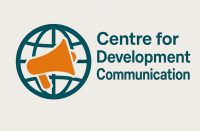In my 15 years in the development sector, I have observed that the Monitoring & Evaluation (M&E) practice by a greater number of NGOs is often perceived as a necessary administrative task. For the organisations, it is a task to satisfy donors, complete reports, or tick boxes on a log frame. After spending years in the field implementing different development interventions, I have learned this: true impact doesn’t reside in spreadsheets or static indicators. It lives in the experiences and voices of the communities we serve.
A practice by a greater number of NGOs is merely to reduce M&E to counting outputs such as the number of workshops held, reports submitted, or surveys completed. While these metrics may fulfill contractual obligations, they do not tell the full story. They do not tell stories that enable us to know whether our interventions empowered the people, strengthened systems, or led to meaningful change.
I strongly believe that, for us to move from compliance to impact, we must rethink and redesign how we approach evaluation, which will facilitate listening to beneficiaries and hearing impact stories through field visits, in-depth interviews, and open conversations that will be carried out using a participatory approach. This will enable us to discover insights that data will not give us. This approach allows us to know where our interventions are making impacts, where they’re not, and most fundamentally, why they are successful or fail. To be clear, I am not saying that this human-centred approach to M&E means abandoning structure or rigor. It is simply an approach that complements numbers with narratives. It means the brevity to ask uncomfortable questions and the humility to learn from the answers.
I strongly advise that our work in the development sector must evolve from activity tracking to adaptive learning. At the same time, it must evolve from asking, “Did we do what we planned?” to “Did we make a difference?” This approach changes our M&E practice from reporting activities to one that guides our decision-making, brings innovation, and enhances accountability. When M&E provides an opportunity for reflection and adaptation, NGOs and development partners will function better, scale what works, and drop what does not. At the same time, this fosters a culture of continuous improvement rather than rigid implementation.
I believe that if we care about the impact of the development work we do, we must go beyond documenting activities; we must understand their impact on the beneficiaries. This approach begins with listening to the beneficiaries and learning from their stories. The outcome is going to shape our interventions and approach to development. We must move our M&E approach beyond the checklist to people people-centred approach
Audu Liberty Oseni
Director, Centre for Development Communication

